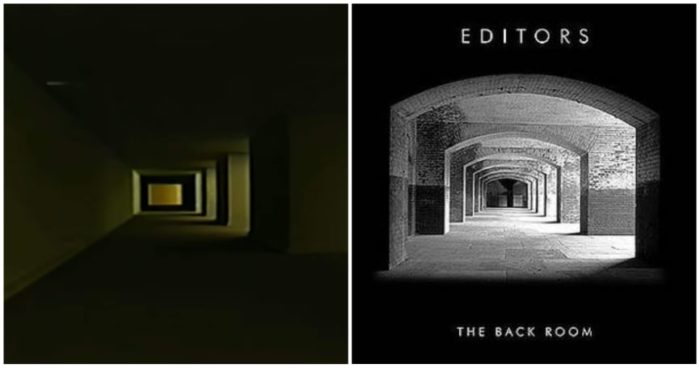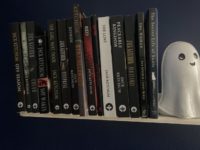There is a growing trend of horror shorts online recorded in lo-fi resolutions, and featuring yellow papered walls. Known as The Backrooms, this space is where one finds themself when they trip through a hole in reality—a glitch in the fabric of existence. Plenty of videos are floating around online chronicling this intriguing concept, and just begging for a lengthier production to explore the depth of horror the idea entails. After seeing YouTube uploader Kane Parsons’ The Backrooms (Found Footage) short, I was enamored with the idea and wanted to find out more about this captivating enigma that over 18 million viewers have experienced so far.
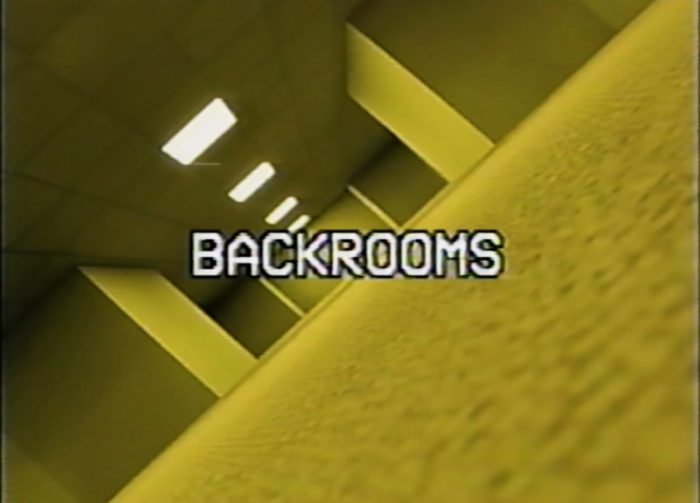
Like the cameraman character we follow in the short, I fell into a rabbit hole chasing The Backrooms legend. After seeing the film, I sent it to a few friends and searched for The Backrooms’ origins. I immediately found a ton of shorts online about The Backrooms. Some of the shorts are more captivating than others depending on the angle the film decided to take. The Kane Pixels film features a strange alien presence stalking the intruder, which I was informed through the community of Backrooms enthusiasts, doesn’t exactly fit the mentality of the original concept.
Consider a video game world or a Matrix–inspired existence, where there is a programmer for everything that makes up our existence. Object programming can become problematic if things aren’t aligned correctly in the video game’s code, especially between surfaces or objects. This sometimes causes characters to suddenly fall through the video game world, causing them to wind up on the video game achievement and blooper show, Highlight Reel. While the unfortunate consequence in games is having your character die (or needing to restart), they’re often resurrected from the last save point without the memory of realizing their life is a lie and their world is virtual. The character then continues on their quest without any time having passed.
Patches issued in video games over time stop these in-game errors from occurring and prevent the character from “noclipping” out of their reality. If we assume our reality to be a simulation, and someone somewhere has added a safeguard, the notion becomes horrifying. When you consider the room 4chan and Creepypasta visitors have created, for when you find yourself “noclipping” out of existence, the anxiety it triggers is deeply resonating.
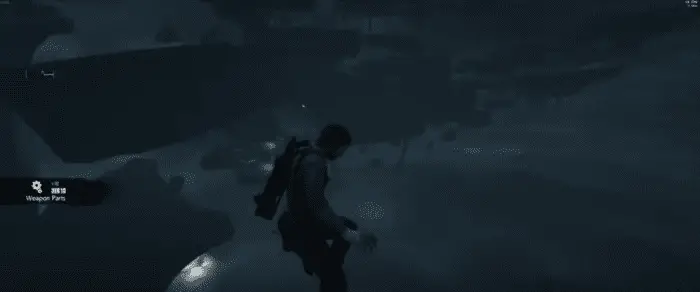
Origins
Originating as a 4chan post in the “disquieting images” thread in May 2019, as a re-upload from a 2018 image in their “cursed images” thread, the uploaded photo of empty open office space with drab carpeting, no windows, stained drop-ceiling panels, bright yellow walls, and fluorescent lighting is quite unsettling. Some have argued over the location where the photo was taken, while others believe it to be digitally rendered. The text with the picture read:
“If you’re not careful and you noclip out of reality in the wrong areas, you’ll end up in the Backrooms, where it’s nothing but the stink of old moist carpet, the madness of mono-yellow, the endless background noise of fluorescent lights at maximum hum-buzz, and approximately six hundred million square miles of randomly segmented empty rooms to be trapped in.
God save you if you hear something wandering around nearby because it sure as hell has heard you”
The picture elicited responses from the Creepypasta community regarding users’ soul-sucking office jobs, and user Claykid12345, running with the new mythos, created the first Backrooms story. Claykid12345 wrote a simple couple of paragraphs about a man slipping through the walls of his doctor’s office.
If you’ve ever worked in an office or had friends who’ve told you stories, you know the monotony of repetitive tasks is amplified by the tonally mute carpet, bland paint, and the hum of the overhead lights. The word for that type of dread is called Kenopsia, a word I had never heard before, coined by John Koenig for use in his book The Dictionary of Obscure Sorrows. The neologism feels created for this specific instance, “an eerie forlorn atmosphere of a place that’s usually bustling with people but is now abandoned and quiet.”

Instead of getting into fights with nameless, faceless people on the internet, I do research, make my own decisions, and present my findings. There are two groups of thought about the Backrooms. The first seeks to expand the mythos and insists there are hundreds of Backroom levels popping up, filled with imaginative creatures, decorations, and surprises. From jungle-themed rooms to killer clowns, this train of thought appeals to the infinite possibilities of the space. The other group insists there are only three.
The three levels insisted upon by Backrooms purists start at Level 0 and work their way to Level 2. The liminal space of Level 0 is the one I’ve already described, desolate and tonally neutral, yet disturbing nonetheless. Humanoid entities, known as hounds, lurk at this level that should be avoided as well as a “no clip zone,” said to have the power to return the individual home, back to the starting location of The Backrooms, or into a different reality altogether.
Level 1, the second of these levels, can only be reached when a wanderer decides not to use a no clip zone and instead drive themselves mad by investigating the space for days. Getting to Level 1 never suggests an opening of doors; instead, a person would just suddenly find themselves elevated to the level psychologically. The lights flicker more frequently on Level 1 and seem to have a muted brightness versus that of Level 0. The other key difference is the architecture starts to get more industrial, with the sounds of mechanical whirring and spinning cogs heard throughout the rooms.
Finally, Level 2 is the darkest level of The Backrooms. It consists of the most industrial technology and a high temperature, and if I’ve read it correctly, presents itself as the final psychological component to escape The Backrooms. Like Level 1, Level 2 can only be reached through hours or days spent in the previous level. Sometimes called “The Foundry,” Backrooms survivors state that the only way to leave the bright yellow maze of damp carpet is to accept the space as your home.

There are plenty of reasons The Backrooms are the perfect horror concept. We first have to consider that whoever designed this space was trying to craft something non-threatening. Analytics of data trends for the designer would have suggested that millions of people work in these spaces and spend the bulk of their life there. That could imply that the original intent of this space was supposed to put people who fell into The Backrooms at ease by making the area look similar to places they’re not only familiar with but, from an outside perspective, seem to enjoy spending all their time in spaces nearly identical to these.
Knowing that brings on the immutable psychology of dead-end jobs, the stress of time-crunches, and the existential crisis of wasting one’s life behind a desk in a cubicle. The idea that a clipped-out person has to believe they’ll die in an office to escape is relatable to anyone who has ever quit their job due to dissatisfaction with their work life. Even I have found myself guilty of that maelstrom of emotion and crippling trepidation.
My Backrooms Theories
I like both versions of the argument, but the three levels idea works on a psychological level, unlike that of a Chuck E. Cheese-inspired level. Sorry, but that’s as off-the-rails as Hellraiser in space. Needing a person to accept their fate as a cog in a machine over the sounds and architecture of industry is extremely blunt. But, being that the person stuck in The Backrooms never has to go anywhere physically, can we consider, maybe, there’s only one level with various psychological renditions depending on the individual?
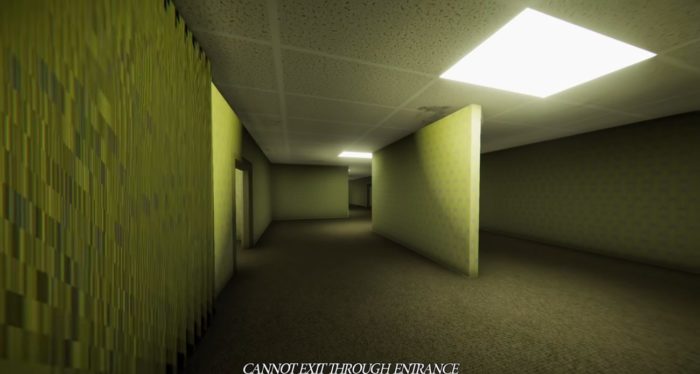
I like to consider the backrooms as one level constantly transforming like the M.C. Escher painting Relativity, which features neverending and mind-bending staircases. In the video game Returnal, whenever the character dies they respawn to find the areas of the level they’re exploring different from the design they walked through before. This is how I view The Backrooms. Imagine walking from one section of The Backrooms into another, only to find a different iteration of the one you just came from, and walking back into the last room yields its changes as well. It’s like being in a maze on a Rubik’s cube while someone’s trying to solve it.
I also perceive The Backrooms as a catch-all set at the thin spots in our reality to ensure our safety. As previously stated, the design may have been chosen to put us at ease, like when Eleanor (Kristen Bell) wakes up in The Good Place to the words “Welcome! Everything is Fine!” However, we can theorize that the designer has to use this catch-all for more than one iteration of the game over time. Consider GTA V for a moment. The game has been out since 2013 but continues being modified from its original version, and because of variables from content updates, a team needs to keep an eye on the game in case a new update causes problems. The more content Rockstar puts in to their game, the greater the need to monitor issues. If a cosmic creator continues adding new storylines, objects, etc., it could mess with the simulation’s initial code.
Let’s consider missing person reports over the last thirty years. Statista shows the pinnacle of missing person reports occurred in 1997 when 980,712 people were reported missing in the United States. I get this is starting to sound super conspiratorial, but I promise, I just like basing my imagination on some truth. Anyway, let’s say 1997 is reality’s first “Backrooms patch.” People may have started to suspect these missing person reports were pointing toward something else, and the designer would then try to deviate that sentient notion. The architecture of the backrooms, perhaps meant with the banality of a place most individuals are familiar with, could also serve as reprogramming by ingraining a corporate “do your job” mentality onto the individual.

Somehow this timeline fits with both the dawn of the internet and probably the scriptwriting of The Matrix. But, let’s say that up until the first patch, people were just disappearing from reality without a trace. Beta tests for the liminal space seem to work, but with the millennium came monumental advancements in technology the designer wasn’t ready for. While numbers deplete from the highest recorded in 1997, the numbers remained high. From 2002-2006, the numbers plateau again, and 2.0 is installed. Numbers go up again between 2013-2017, when our latest patch was installed, as missing person numbers begin dropping to their lowest reported numbers in 30 years. Those figures could coincide with anything in our reality from the smartphone revolution, the mainstream adoption of hybrid cars, or anything widespread enough that would affect a large portion of the population.
Now, we can say that with this data, The Backrooms are working to protect us from falling through our simulated world. But maybe the designer is so preoccupied with patching these rotating spots continuing to spring up as this simulation continues to grow, upgrade, and thrive. If our simulation has been running for a long enough time, they may also be working on other simulations based on our simulation’s success. In video games, that’s called an add-on pack. The developer would likely use the same backrooms code to save characters from those add-ons as well as the simulation we’re a part of. If that’s so, these spaces can shift and move based on where and what rendition needs it most. If a patch is issued and a character is still looking for their exit in the backrooms, they could end up connected to a reality entirely different from the simulation they’re accustomed to. Call of Duty has zombie modes that generally have nothing to do with the game, right? Who’s to say that our simulation doesn’t have various modes to that effect we aren’t supposed to know about.
The creator hasn’t considered a “no-clipped” individual getting stuck in a place that may also be catching the feral hounds, the zombies, or aliens from the add-on packs. These beings may “noclip” into the same space this individual finds themself in, and I think that could make for some interesting adaptations of the mythos in the future. This theory would also fit the mythos of “no clip zones” in The Backrooms, and a character from our daily sim could wake up in a new world like Rick Grimes in The Walking Dead, to a message of “Don’t Open Dead Inside.”
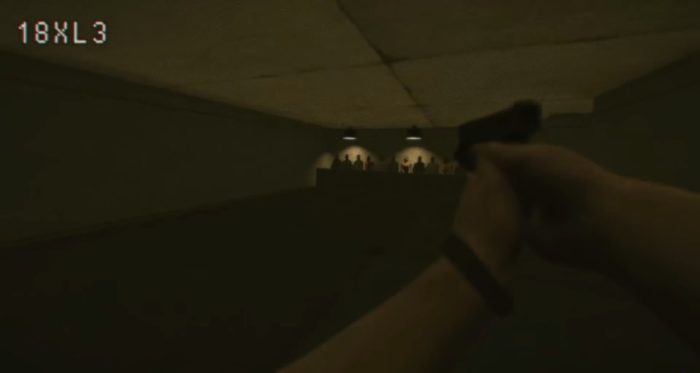
Other Backrooms Worth Exploring
What I enjoy about the other train of thought on the subject is that this concept can apply to more than one space. While the creepiness of The Backrooms concept uses the five stages of grief, in making a point about the hours we spend stuck at work, acceptance is the only thing that allows them an exit. But not everyone hates their office job, and many of the levels created after Level 2 could affect those percentages outside the mainstream. Level 90 resembles a mall, and Level 94 is a penitentiary. Focusing on their specific situations could imbue a different fear response if you’re looking to scare someone into subservience.
Osmar Ramirez’s Into the Backrooms explores some of these other levels to exceptionally creepy effect, even the Chuck E. Cheese concept I considered a little brash before. I’d recommend this slow-burning Mexican short film to anyone looking to see the concept’s manipulation can induce fear and panic for people who don’t live in a nine-to-five office world. The film may have a bit of an intro but sit tight. This one ends on a wild note.
When I sat down to write this piece on this vast and insidious concept, I first came across a video game, The Backrooms Game, which I initially thought was the precursor to the Kane Pixels film. Currently free on Steam, the game contains all of the psychological trappings discussed above, including a random level generator to keep the experience fresh. The game’s developer, Pie on a Plate Productions, is expecting a full-edition to release sometime in the future, and you can follow their progress on their website. There are also other Backrooms games on their way out as well.

I said it before, but it bears repeating. This idea is bound to end up in movies at some point. Hell, I’d be surprised if the V/H/S ’94 producers haven’t already approached Kane Parsons to include the short in the next anthology, especially since Parsons has been uploading more and more videos to continue the legacy of his breakout short. If someone doesn’t approach the director soon, I’d worry about the potential of any film we did end up seeing. In the wake of the (at least) a half-dozen Slenderman movies that came out of the original Creepypasta concept, The Backrooms could end up in the hands of someone who doesn’t fully understand the idea and ends up turning it into Escape Room 3.
The last thing I want to mention is one of my favorite albums. Post-punk band Editors’ The Back Room is creeping up on 17-years-old now, but the lyrics have the inflection of fear and paranoia over the track “Lights,” which contends that “If fortune favors the brave / I am as poor as they come.” Or the hook of their UK top-ten charting single “Munich,” which suggests, “People are fragile things / You should know by now / Be careful what you put them through.” Somehow the intensity of the subject matter in the album also makes for a perfect soundtrack to the new phenomenon.
I’ll leave you here with the first lines of The Back Room’s “Fingers in the Factory,” which say, “Easy said and easy done is how we like this / Keep us in our place,” and you’ll get the sense that either Editors have visited The Backrooms, or the Creepypasta creators were fans—and, If not, that’s a disturbing coincidence.
